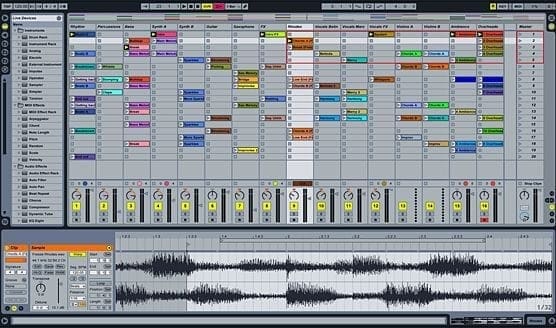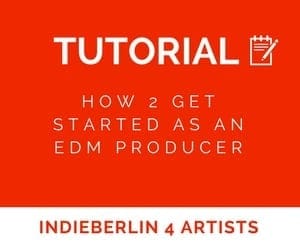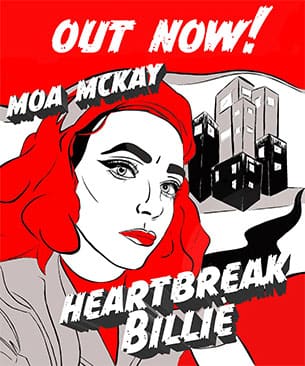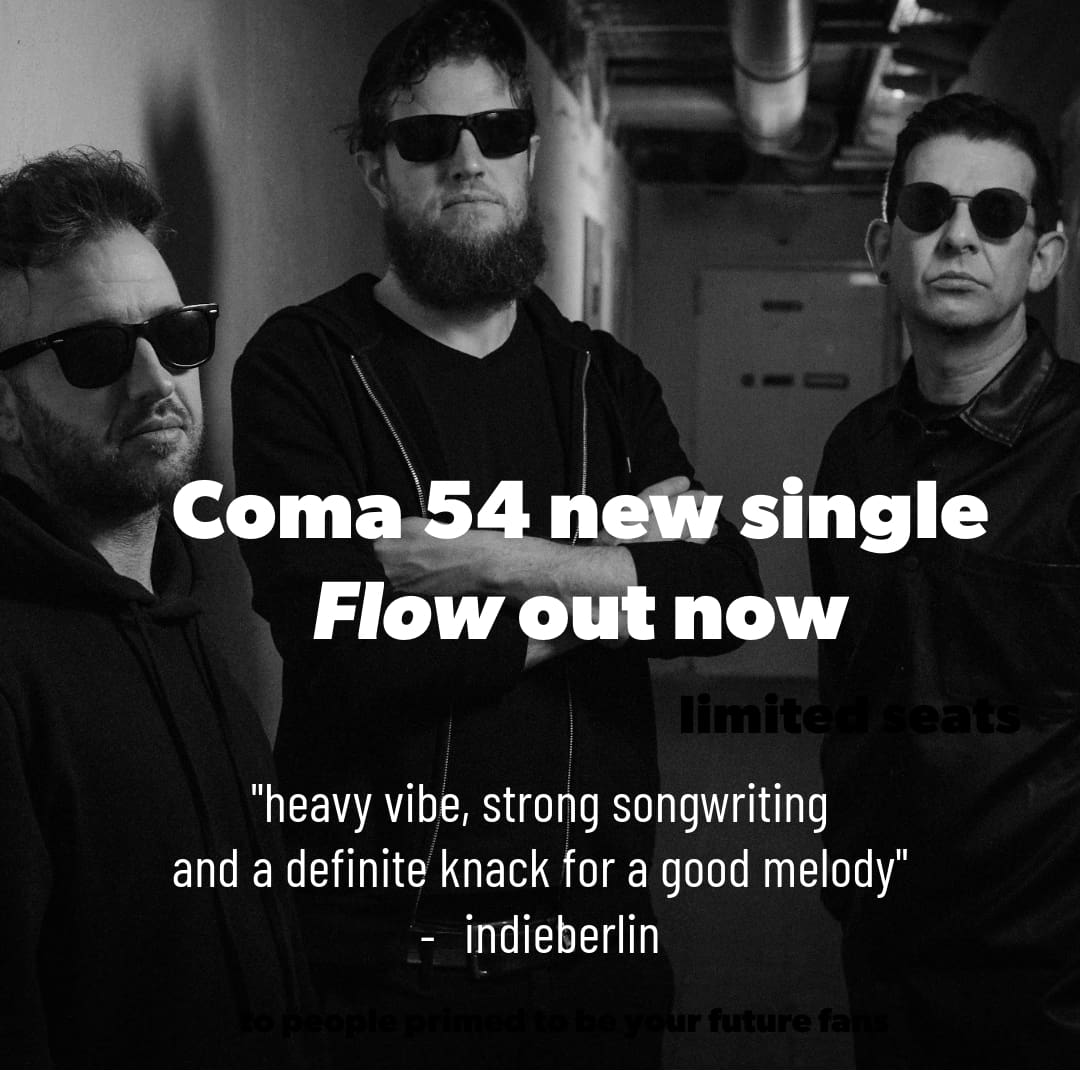You can be forgiven if, when you think of electronic dance music, your mind immediately conjures thudding straight-four beats, flashing lights, crowded raves, glow bracelets and the lot. There’s always some truth to caricatures, even when these only scratch the surface, leaving the essence untouched.
The thing with EDM is that it isn’t simply “a thing.” A quick scan of Wikipedia lists 25 major genres, with hundreds more sub genres, everything from Ambient Dub to Nintendocore. And when it comes to EDM creation, there are dozens of options for every aspect of composition, from instruments and controllers, to software and applications.
From massive festivals to underground raves, EDM has been gaining popularity and starting musical trends for many years.
It’s into this maelstrom that any budding EDM producer wannabee wades. It can be intimidating, since there are as many ways to work as there are EDM creators working.
Many of the sub genres are styles that developed on the street, using simple equipment and even simpler ideas
One thing to keep in mind, though, is that many of the sub genres are styles that developed on the street, using simple equipment and even simpler ideas. There’s a reason that styles, equipment, and techniques have so many options, and that traces back to the accessibility of the form. Don’t over-complicate things. EDM is music that’s danceable and created with electronics. Everything else is window dressing.
What moves you?
It’s the first question you need to answer. What makes you want to tap your feet, shake your booty, or squirm in your chair? There are a few ultra creative types who have nothing but original ideas that they can visualize and execute from their earliest days. I don’t know any personally, though.
Despite the fact that you don’t need to play an instrument or even understand electronics to create EDM, there are things to learn. Don’t worry, there’s no need for a 20 year apprenticeship. Almost anyone can make something coherent in their first hour noodling around with GarageBand.
But with the myriad of choices of equipment, software, and all the other bells and whistles, you’ve got to start somewhere, so look to the artists that inspire you and learn about their methods. That may suggest directions for you to try. Your earliest successes may come from recreating sounds like those of your favorite producers. This is a gateway toward discovering your own creativity, once you have control of your tools.
There are many, many different kinds of genres for you to enter. When you start experimenting with different genres of music, you can combine certain traits from each genre to form a truly unique sound.

Abelton Live, a great piece of music software
The Tool Box Part 1: Software
The biggest commitment you’ll make is to your work platform, or digital audio workstation (DAW). These don’t have to be expensive, but they do require some dedication from you in terms of learning.
As a general rule, the more you spend, the more features and content you can expect from your DAW. More is not always better. In fact, for most budding producers, becoming expert on the basics provides a stable groundwork for later experimentation and artistic development.
Here’s why: When you have every bell and whistle available from the get-go, it’s much harder to develop a work sequence. The basics exist along with the window dressing. I won’t lie, those bells and whistles are fun, but they also pull you away from fundamentals like developing good beats.
While it’s true the advanced features and plug-ins of a premium DAW package can help make your good beats sound great, there isn’t a software application yet that can do that for a garbage beat.
If lo-fi and noise industrial are your thing, then place an asterisk here, but your music is better served when you can understand and control basic concepts before moving into more complicated features.
cua

Where the magic happens
The Tool Box Part 2: Hardware
Once upon a time, and not that long ago, hardware was the budget sticking point that kept music creation out of the hands of the masses. That ended with the onset of computer audio recording, and the trend continues both inside and outside the computer’s CPU.
I mentioned that much EDM began as music of the street. Early rap and hip hop took some awful-sounding — in the rock context — rhythm boxes and defined a sound that endures today. The motivation wasn’t originally the sound of the equipment, but its affordability.
Now, it’s possible to record tracks completely on a computer tablet, with no external controllers. While that’s great for music creation in all sorts of exotic locations, you’ll miss out on a lot of fun with other controllers if you restrict yourself to an iPad.
The cost of piano-style keyboards has never been more affordable, but these require a basic understanding of music theory, and while you could map loops to an MIDI keyboard, a new breed of device, inspired largely by a particular DAW program from Ableton called Live. It was really the first DAW that lent itself to live performance and spontaneous, improvised music creation using loops and beats.
This gave rise to controllers using grids of backlit buttons, typically about an inch square. While you can spend a grand on top-of-the-line grid controllers, you can also pick up budget versions for under a hundred bucks.
And you’re not limited to Ableton Live by any means. These controllers primarily use MIDI control mapping, so virtually any DAW software can learn to work with these devices. In particular, Bitwig builds on some Ableton concepts and brings a new approach to clip-based music production, since it was developed by a bunch of ex-Ableton programmers.
For EDM styles that use turntables, there are now virtual options, too. When most controllers connect via USB to the main computer or laptop, configuration possibilities are extensive. Here’s another place where you should start small, learn your gear and find your natural limitations.
As you develop as a producer, you will seek out the appropriate gear when you find the edges of your emerging style.

Don’t get caught up in presets
Avoid the Preset Predilection
As you amass your software tools, you’ll encounter presets in many of the effects, plug-ins and add-ons in or used by your DAW. These are a great way of learning how these features work, as well as how you can shape your sounds the way others do.
You’ll even develop some favorites, presets you’ll use time and time again. There’s an inherent danger in this. Everyone else who uses the same DAW package has the same presets.
Want your music to stand out? Don’t do what everyone else is doing. There’s probably no place that’s more true than with effects presets. Don’t get me wrong, presets are amazing time-savers, getting you into the right sonic neighborhood. Being on the block, though, is just the start. Learn to tweak, and tweak mercilessly.
An adjustment here may open a hole over there, or perhaps reveal a nuance you hadn’t heard over here. It’s these little changes that define you and your music. The difference between good and great often comes down to tiny increments.
The same concept applies to loops. There are amazing kits of samples with all the pieces you need to create a complete track. Another producer using the same kit, however, has the same raw materials as you. Do you want the same paint-by-numbers tune as them? Probably, you don’t, so be prepared to deconstruct, mix, match, alter, reverse, or whatever else you can think of to put your own spin on prepared material. Royalty-free doesn’t have to be creativity-free.
The Final Mix
Any article of this type is sure to have readers who expect a numbered to-do list. They want the How to be an EDM Producer preset. I don’t believe that following someone else’s list is the best way to pursue your own inspiration. You can draw from everyone and everything you hear. You can also get bogged down in the advice and good intentions of others, when in fact you should be charting your own path.
That’s not to say you need to reinvent every wheel. This is the information age, after all, and the Internet is full of how-to and you-should advice, much of it contradictory. Absorb everything and squeeze out the good stuff, the things that make sense to you.
Learning the tools takes time, but it’s necessary. Just as a carpenter doesn’t think about how he wields a hammer every time he drives a nail, your focus should be on the music, with the software and hardware serving your inspiration, the tools that you use intuitively.
You will meet many, many people who call themselves producers who are, in fact, merely collectors of stuff. They will have the latest controllers or the Top Five DAW software packages, but you’ll rarely hear their music. And that’s okay. Collecting is fun too.
To my way of thinking, though, if you call yourself a producer, you should have product, otherwise, what’s the point?
However, if you’re still waiting for the to-do list, I offer you mine:
- Get a DAW and a controller of your choice.
- Make some dance music.
- Play it for people.
- Congrats, you’re an EDM producer.
- Repeat and improve.
That’s it. Get out there and do it.
This is a guest post from Doug Beney from midilifestyle.com



